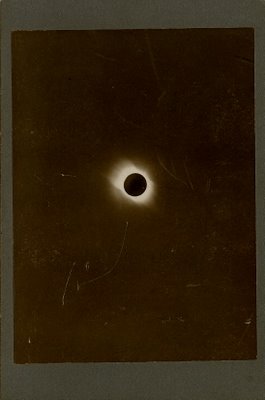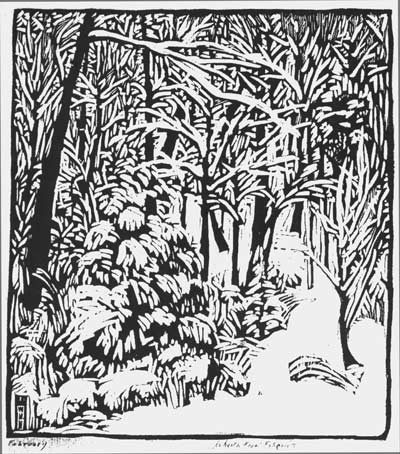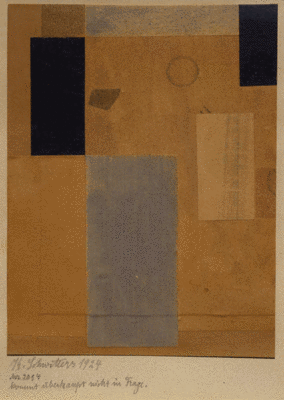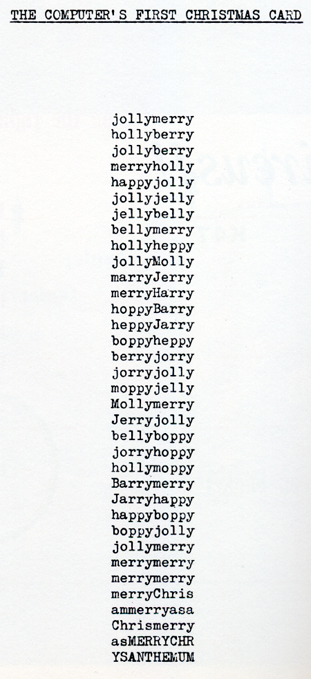Schwarz
View current page
...more recent posts
DAVID: If you were offered a chance to do an adaptation, say, of The Importance of Being Earnest for the screen, would you ever do something like that?
FRAN: No. Because what would you adapt? There's already been a wonderful movie of The Importance of Being Earnest, and it's a play. What always shocks me — this is the main thing I hate about the theater — is that every single person in the world can fuck with Shakespeare. Like you know, "Shakespeare? What does he know? He should have made Lady Macbeth … a Hell's Angel! Why didn't he think of that?" You know, any idiot can do that, but you can't touch a word of Neil Simon. Shakespeare doesn't have that … writer's guild, or whatever the union it is that represents playwrights …
DAVID: NAFTA.
FRAN: NAFTA, that it. The Teamsters. Whatever it is, the reason people like to write for the theater is because no one can change it. So it is against the law to change a semicolon in a Neil Simon play. But anyone in the world can completely change Shakespeare. It's absurd.
rip willoughby sharp
more terry southern
Mr. Weiner is rightly seen as a founding figure of Postminimalism’s Conceptual arm, which includes artists like Douglas Huebler, Robert Barry, Joseph Kosuth and Sol LeWitt. But he might better be described as a language-based sculptor. He folds together the skills of a Russian Constructivist graphic designer, a Socratic philosopher, a Dada-Fluxus joker, a Concrete poet and a Madison Avenue ad executive with an astute sense of both semiotics and public display. And his penchant for starkly plain typefaces and for stacking phrases up walls like Judd boxes, combined with his emphasis on language’s visual and spatial qualities, also gives him a few Minimalist bona fides.
milano attic
It was September 1, 2005, some three days after Hurricane Katrina crashed into New Orleans, and somebody had just blasted Herrington, who is African-American, with a shotgun. "I just hit the ground. I didn't even know what happened," recalls Herrington, a burly 32-year-old with a soft drawl.~~~~~~~~~~~~~~~~~~~~~~~~~~~~~~~~~~~~~~~~~~~~~~~~~~~~~~~~~~~~~~~~~~~~~~
The sudden eruption of gunfire horrified Herrington's companions--his cousin Marcel Alexander, then 17, and friend Chris Collins, then 18, who are also black. "I looked at Donnell and he had this big old hole in his neck," Alexander recalls. "I tried to help him up, and they started shooting again." Herrington says he was staggering to his feet when a second shotgun blast struck him from behind; the spray of lead pellets also caught Collins and Alexander. The buckshot peppered Alexander's back, arm and buttocks.
Herrington shouted at the other men to run and turned to face his attackers: three armed white males. Herrington says he hadn't even seen the men or their weapons before the shooting began. As Alexander and Collins fled, Herrington ran in the opposite direction, his hand pressed to the bleeding wound on his throat. Behind him, he says, the gunmen yelled, "Get him! Get that nigger!"
What is it Thompson, and the piece's editors at The Nation, refuse to say? Simply that, according to at least two respected forensic engineering reports (here and here), ultimately confirmed by a semi-confession from the involved agency, the flooding of New Orleans was caused by a series of design and construction flaws, stretching back over decades, in the supposed Hurricane Protection System overseen, in all details, by the U.S. Army Corps of Engineers. Hundreds, perhaps thousands, of people drowned and otherwise perished in the flooding, white, black, rich, poor. Did The Nation ever do an eighteen-month investigation to find out why such a system, mandated by the Congress to protect New Orleans after the devastation of Hurricane Betsy, went so terribly, catastrophically wrong?
Or, like the mainstream media, did it content itself with a crime story that used the Katrina disaster merely as a fulcrum?
I write a post this long, and this harsh, because New Orleans has enough problems, self-inflicted and otherwise, without a respected national magazine asserting that the city had or has a race war. There are racists aplenty in New Orleans, white and black. Yet, after two decades of knowing the city pretty damn well, I'd venture to say that day-to-day living in New Orleans involves more casual, easy, frequent interactions between people of all backgrounds and colors than I see, say, in LA, NY, or DC. Flood 80% of any of those cities, flood the airwaves (local and national) with fearful rumors -- after those same airwaves have been gleefully saturated with grotesque images of rappers glorifying thuggery -- and see what latent emotions come to the surface.
Fair readers, hail! Now here’s a teaser: Who’s this pale, familiar geezer
Appearing through the mists of time
Atop a tow’r of creaky rhyme?
With those lines in this week’s issue of The New Yorker magazine, Roger Angell introduces himself — or, rather, reintroduces himself — at the start of a page-long holiday poem titled “Greetings, Friends!”
floating bed
via zoller
2009 digital farmers almanac
have a rockets redglare x-mas
OBS (original bad santa)

circa 1900 photograph of a solar eclipse
via anonymous works
an ambitious project collapsing
via reference library

from the book illustrations of warton esherick
craftsman 1470 pc tool set
7 offbeat off the grid green gadgets
via zoller
bad cell phone reception at home? TOH used a similar system this season to relay a cellular signal from a roof-top mini-dish down to the living area. if you have bars out side you will have service inside. zboost
philly warehouse space auction
rip davy graham
To many American listeners Mr. Graham’s best-known piece of music is “Anji,” a guitar solo that Paul Simon performed on Simon and Garfunkel’s 1966 album “Sounds of Silence.” But Mr. Graham’s blend of Celtic music with blues, jazz, spiky syncopations and Eastern modes — he called it folk-Baroque — has been widely influential since the early 1960s, particularly with musicians who sought to revitalize and extend British folk traditions. Among them were Pentangle, Fairport Convention, John Martyn, Martin Carthy and the guitarist Jimmy Page of Led Zeppelin.
Mr. Graham popularized what guitarists call the DADGAD tuning, named for the notes on the six strings from lowest to highest; the standard tuning is EADGBE. The DADGAD tuning, introduced on recordings by Mr. Graham’s 1962 version of the traditional song “She Moved Through the Fair,” facilitates modal chords with the resonance of open strings. It has been used widely in traditionalist music as well as in rock by Led Zeppelin and others.
bumping the KTainer project to the top again. great work!!! thanks for the tackling additional workload of posting about your project!!!!
christmas '08 - FUCK IT!!!


